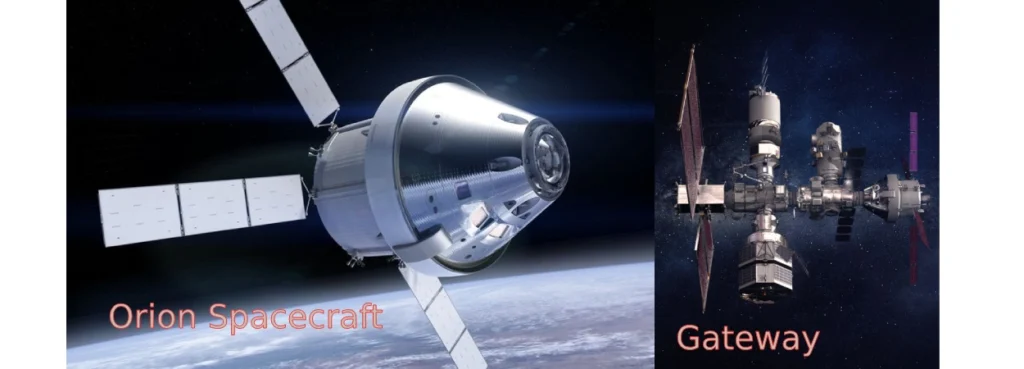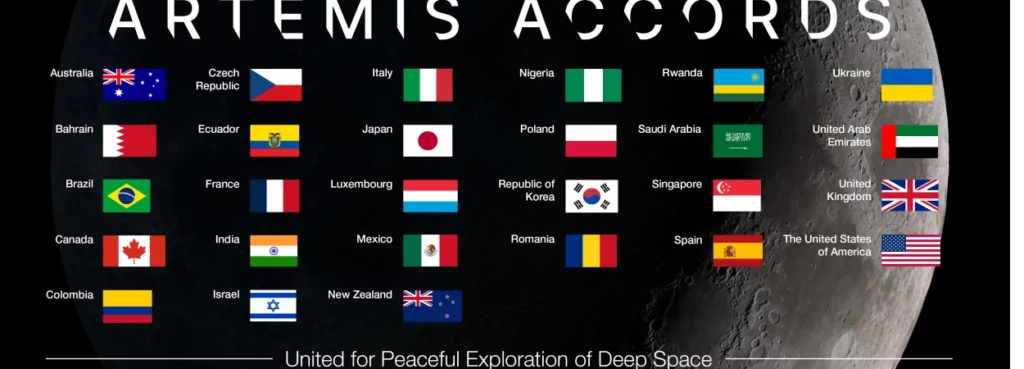Table of Contents
The Artemis Mission and the Artemis Accords represent an exciting chapter in humanity’s quest for lunar exploration and International Cooperation in space exploration respectively. India became the 27th country to sign the Artemis Accords, which brings like-minded nations together on civil space exploration. Indian Space Research Organization (ISRO) and the National Aeronautics and Space Administration (NASA) have agreed to a joint mission to the International Space Station in 2024.
Artemis Missions
NASA’s Artemis mission will send the first woman and person of colour to the Moon, allowing for the most thorough exploration of the lunar surface ever. NASA will construct the first permanent presence on the Moon in cooperation with private industry and international partners. In future, NASA is planning to send the first astronaut to Mars.
An Artemis Base Camp will be built on the surface, and the Gateway will be in lunar orbit. These elements will allow our robots and astronauts to explore more and conduct more science than ever before.
The Lunar Gateway is an orbiting research and exploration station that will make regular human visits to the Moon possible. It will be part of NASA’s Artemis lunar exploration programme.

About Orion:
The Orion spacecraft from NASA is designed to transport people for Artemis missions . Orion will act as the crew’s spacecraft for exploration, offering emergency abort capabilities, crew resupply during spaceflight, and safe re-entry from deep space return velocities. The Space Launch System(NASA’s Space Launch System will be the most powerful rocket ever built), a new heavy-lift rocket from NASA, will carry Orion into space.

The Artemis Accords
The Artemis Accords are non-binding principles for cooperation in the civil exploration and use of the Moon, Mars, Comets, and Asteroids for peaceful purposes. They are based on the Outer Space Treaty of 1967 (OST). These Accords aim to further the Artemis Program by establishing a shared vision through a realistic set of principles, standards, and best practices for civil space exploration and utilization. A practical set of principles, rules, and best practices for space activities is intended to boost safety, eliminate uncertainty, and promote the sustainable and productive use of space for all humanity.
These Accords’Accords’ guiding principles are meant to be applied to all civil space activities carried out by the civil space agencies of each member. Each signatory pledges to take the necessary actions to guarantee that organizations (including private operators) acting on their behalf abide by the principles of these Accords.
The Principles Covered By Artemis Accords
- Peaceful Purposes: The purpose of international cooperation on Artemis is to promote space exploration and strengthen friendly relations between nations. Under the principles of the Outer Space Treaty, the Artemis Accords stipulate that all activities must be conducted for peaceful purposes.
- Transparency: Artemis Accords signatories will transparently conduct their activities to avoid confusion and conflicts.
- Interoperability: Countries taking part in the Artemis program will work to support interoperable systems to improve sustainability and safety.
- Emergency assistance: The provision of emergency assistance is vital. Signatories to the Artemis Accords acknowledge their obligations under the Agreement on the Rescue of Astronauts, the Return of Astronauts, and the Return of Objects Launched into Outer Space and pledge to use all reasonable efforts to provide necessary assistance to space personnel in need.
- Registration of space objects: Appropriate registration can help mitigate the risk of harmful interference. The Artemis Accords reinforce the importance of meeting our obligations under the Registration Convention.
- Release of scientific data: Artemis Accords signatory’s commitment to promptly and transparently share scientific data with the global community can help to ensure that the entire world can benefit from space exploration.
- Preserving heritage: Outer space heritage is our shared heritage. Artemis Accords signatories commit to preserving heritage in outer space, such as historically significant human or robotic landing sites.
- Space resources: It is essential for long-term viability that space resources be used in a way that is consistent with the Outer Space Treaty, helpful to humanity, and critical to sustainable operations.
- Deconfliction of activities: Important provisions of the Outer Space Treaty include clauses addressing proper regard and detrimental interference. Signatories to the Artemis Accords assist in carrying out these commitments by notifying others of their actions, including the location and broad range of their operations, and working with any relevant parties to prevent detrimental interventions. The area covered by the notification and coordination is called a ” safety zone.”
- Orbital debris: The Signatories commit to plan for the mitigation of orbital debris, including the safe, timely and efficient passivation and disposal of spacecraft at the end of their missions and to plan for the mitigation of orbital debris, including the safe, timely, and efficient passivation and disposal of spacecraft at the end of their missions.
Conclusion
The Artemis Accords represent the best multilateral leadership in civil space diplomacy and unite a diverse set of nations with a shared vision of peaceful space cooperation. It will help Countries to use their resources soundly and decrease the menace of space debris.




